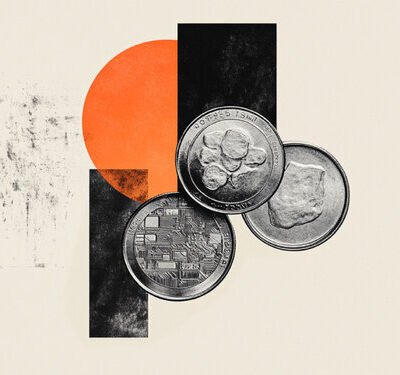When a show becomes a breakout hit in London’s West End, the next step often seems obvious — transfer it to Broadway. But the leap across the pond isn’t always as easy as it seems to be; along with the transition’s obvious logistics, this shift can cause changes in theatrical ecosystems, audience expectations, and economic realities.
In two exclusive interviews with BroadwayWorld Contributor Rachel Schmaier, Broadway producers Dylan Pager (Director of Producing & Creative Development, No Guarantees Productions) and Thomas Swayne (Executive Producer (North America), Sonia Friedman Productions & Harry Potter and the Cursed Child) shine light on just how different the Broadway and West End business models truly are. However, while the decision to transfer a show internationally can be far more complicated than it may appear, with great risk comes great reward; it can also yield great opportunity.
Broadway vs. West End: Two Different Economic Universes
“The entire economic DNA is different” says Swayne. When comparing Broadway to its West End counterparts, a few key distinctions stand out.
First, consider labor. Broadway both hires far more staff per cast and crew and pays higher salaries per capita, largely due to its emphasis on unionized workers. “You can’t have one crew member working across departments” Pager explains. “We’ve worked on productions that started in the West End that then came to Broadway that ended up being 3 times the cost, even though the set was already built and the rehearsal period was truncated.” In other words, the admirably fair working conditions that unions provide their members come with a price.
But the difference isn’t just felt in paychecks. “Marketing costs, real estate, insurance — everything on Broadway is more expensive” says Swayne. “And just to get your show on anyone’s radar, you are spending almost a million dollars on marketing and publicity before you’ve even opened.”
“On Broadway, a large-scale musical might cost $18 to $25 million or more these days. That same production that originates in London might be £6 to £9 million.” -Swayne
The divergence continues once the curtain rises in weekly running costs and recoupment. On Broadway, recoupment marks the point at which a show has paid back its initial investment and can begin to turn a profit. Broadway musicals can cost as much as $850K a week to run and oftentimes even more. If a Broadway musical were to cost $850K per week to run and you’re grossing $1M, it would take over 2 years to recoup a $20M investment.
In London, lower weekly operating costs mean shows can afford to find their audiences more gradually. In the West End, you can build momentum over time and there’s more space for word-of-mouth to grow. On Broadway, you’re often in crisis mode if you’re not immediately covering your costs.
Ticket prices reflect this urgency. Broadway tickets frequently top $200, while West End shows typically maintain more accessible pricing. That means lower grosses, but also more realistic expectations. “Just because a show runs longer in London doesn’t mean it’s making more money” Swayne adds. “But it does mean it’s surviving.”
The cost of mounting a show in the West End is generally lower than on Broadway, largely due to two key factors: the UK’s Theatre Tax Relief program and the availability of subsidized houses. The tax relief offers a significant rebate on production expenses, easing the financial burden for producers. Meanwhile, subsidized theatres—publicly funded institutions like The National Theatre or the Royal Court—allow new work to be developed at a fraction of the commercial cost. This infrastructure not only reduces upfront investment but also enables riskier or more innovative projects to flourish before transferring to the commercial stage. “If a show starts in a subsidized house,” Swayne says, “the economics are infinitely better and you can take more creative risks.”
What Makes a Show “Transferable”?
When West End shows do transfer, the economics rarely follow.
Sometimes producers assume a London hit will automatically land in New York. However, the audiences are different, the culture is different and the cost model is different. Transferring a show isn’t just about shipping a set—it often requires a full reinvestment: new rehearsals, new marketing, even re-designs to suit Broadway venues.
There are many shows that struggle on Broadway but have found lasting success in the West End, thanks in part to a leaner, tour-style production and a more forgiving audience. “British producers are often able to shape their shows for a nimbler model” Swayne notes. “There can be more flexibility and more willingness to take creative risks.” Pager agrees. It’s becoming harder to find a middle ground on Broadway.
The reverse is equally tricky. “Once a show’s gone through the U.S. development and Broadway pipeline,” says Swayne, “it’s often scaled so large that it becomes too expensive to reproduce economically in the UK.” Both producers stress that success is never guaranteed, no matter how well a show performs in its home market. Audience taste, cultural sensibility, and timing all play critical roles. “Sometimes a hit feels like a no-brainer to transfer—MJ, Hamilton, Six,” Pager says. “But others have invested time and resources to understand the different markets before deciding whether to transfer.” Sometimes it works. Sometimes it doesn’t. And that’s okay…some shows are just not meant to cross over.
What’s shifting now is the awareness that not every show needs the Broadway build-out. “We’re seeing more hybrid models” Swayne notes. “Productions designed for the West End, for touring, or for smaller Broadway stages. You have to ask: does this show require massive Broadway scale? Or can it thrive on its own terms?” That said, longer runs in London don’t necessarily equate to greater profits. “Lower ticket prices mean lower revenue” Swayne explains. “So while costs are also lower, the margin isn’t always huge.” Entry-level West End tickets might cost £15–£20, while discounted Broadway tickets often start at $40–$50.
The West End model allows shows to open gently and build an audience over time. Broadway, on the other hand, offers the potential for far higher returns—if a show hits big. “In the U.S., when you’re successful, you can be really successful” Swayne says. “In the UK, you can run longer and make money. However, how much money you make depends on a delicate balance between costs and ticket prices.”
But It’s All Nuanced…
For decades, Broadway has been held up as the ultimate finish line for any commercial theater production. But that narrative is evolving. “There’s this idea that success means transferring to Broadway” Swayne notes. “But in many cases, a show is better off staying in London — or starting there. The economics work. The audience is there. And sometimes that’s where the story lands best.”
As producers recalibrate in a post-pandemic landscape — navigating rising costs, shifting tastes, and fewer guarantees — the definition of success is expanding. Not every show is built for Broadway. And increasingly, the smartest path forward isn’t about scaling up…it’s about knowing where a story belongs.
“Some shows,” Swayne says, “are simply meant to live in the West End. And that doesn’t make them any less successful — it might make them more so.





